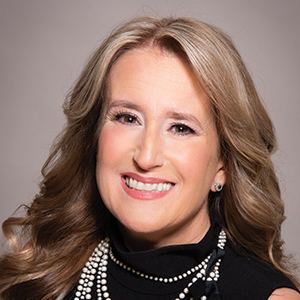America’s long love affair with home improvement and renovation found a home, naturally enough, on television. Think of the 1960s TV shows such as “Bewitched” and “I Dream of Jeannie” where the main characters could change their already stylish homes into something even more impressive with a twitch of the nose or a blink and a nod of the head.
Fast forward to the next decade when “This Old House” premiered and host Bob Vila took the mystery out of restoring homes. The show is still airing today. In fact, homeowners can satisfy their cravings with any number of home restoration shows on network TV, cable and streaming channels. More importantly, homeowners can star in their own show thanks to renovation mortgages.
Charm and character are coveted perks, and no amount of faux painting and distressing can ever replace the genuine satin patina caused by decades of footfalls smoothing an original hardwood floor.
As a mortgage originator, you can play the role of fairy godmother by sprinkling a little mortgage magic of your own. Renovation mortgages speak to all borrowers and there are loan programs for almost any scenario.
A veteran, for example, might want to leverage his benefit with a renovation loan through the U.S. Department of Veterans Affairs. A first-time homebuyer might find luck with the Federal Housing Administration’s 203(k) program, especially if the borrower won’t bring a lot of cash to bring to the table. A rural borrower might be empowered by a U.S. Department of Agriculture renovation mortgage. Additionally, Fannie Mae and Freddie Mac offer rehabilitation flexibilities through their HomeStyle Renovation and ChoiceRenovation programs, respectively.
When a less-than-desirable home is priced correctly and a subject-to-repairs value is calculated, a buyer has ultimate control in getting the home of their dreams by working directly with a contractor of their choosing. They control the major and fine details along with any layout changes. They have the luxury of keeping the long-established aesthetics of the neighborhood where the home was built.
Staying in place
Renovation loans are not only for the purchase market. They offer a terrific opportunity for a homeowner who loves their community but needs to modify their current home. They don’t want to move. They just want to fix up.
Taking a home from the past and modernizing it can improve a neighborhood. Charm and character are coveted perks, and no amount of faux painting and distressing can ever replace the genuine satin patina caused by decades of footfalls smoothing an original hardwood floor.
A rehab loan might be required to make room for an aging parent, or to make much-needed repairs such as a roof replacement or upgrades to an outdated kitchen. The empty nester could see the potential in redesigning and repurposing unused spaces. These projects are as varied as the borrowers and a renovation refinance can work mortgage magic. The bottom line is that your client doesn’t need to go when they may just need to grow.
Renovation loans help create inventory and aid buyers in expanding their search criteria. They provide more purchasing power so the consumer can customize and update the home their way while gaining instant equity due to the fact the appraisal is based on the after-repair value. When it comes to refinance options, the renovation loan is one of the most powerful options available for consumers. A renovation refinance is classified as a rate-and-term refi, meaning that they don’t have to pull out all their equity and cap their loan-to-value ratio.
A cash-out refinance is a good option to access equity but it often caps the borrower at a maximum of 80% of the existing property value. If they want to update their home or expand the square footage, then a renovation loan is the best option because it allows the consumer to max out the loan-to-value criteria. The mortgage is based on the after-repair value, which could add up to 20% to 30% in existing equity.
A smart consumer can leverage the equity in their home when seeking out a renovation refinance option. It is the mortgage professional’s responsibility to keep their eyes and ears open to the changes in the market to best time their loan process. It’s quite the win when the borrower takes out a renovation refinance and locks with a lower interest rate than what they are currently paying. When that happens, it truly can be magical.
Seeing the potential
In a home purchase situation, the savvy buyer can see past the cheap and failing original construction, or any decay caused by neglect, to imagine the potential of the location that lured them. Location, location, location is the Realtor’s original mantra — and it still rings true today.
Buying the worst house on the best block at a great price, supported by a renovation loan, is a recipe for having it all. It’s a terrific way to invest in real estate and boost the local economy. If the neighborhood is in high demand, the return on investment can be greatly enhanced when the time comes to sell.
It’s obvious that home improvement programs and YouTube videos do not make consumers experts on how to renovate a home. Confidence is key when taking on a renovation project. And consumers have that when they use a 203(k) standard renovation loan. The U.S. Department of Housing and Urban Development (HUD)
requires borrowers to hire a consultant from a roster of preapproved options who have the borrower’s best interest in mind. All work must be certified by the HUD consultant. These consultants are not the second opinion; they are the only opinion.
The consultant charges a fee, which varies depending upon the project. Thankfully, they can take stress off the consumer by being the expert on everything construction related. The consumer can relax, knowing an expert has their back. The final inspection ensures that the work was completed to HUD’s strict standards, which protects both the consumer and the lender’s investment.
In today’s changing real estate market, mortgage originators should seek out and develop a partnership with a qualified and motivated HUD renovation consultant, said Catherine Hall, executive director of the National Association of FHA Consultants (NAFHAC). With rising interest rates and continually limited inventory, many borrowers and real estate agents will need sound advice for homes that aren’t move-in ready.
“A properly trained and dedicated HUD consultant can give lending professionals and their referral partners and clients the guidance and assistance to get the borrower where we all want them to be: on the other side of settlement in a safe, enjoyable home,” Hall said.
Building neighborhoods
The National Association of FHA Consultants touts itself as the only organization dedicated to increasing education, awareness and uniformity for everyone involved in the 203(k) loan program. The nonprofit organization has a mission to provide competency, consistency and community in the world of 203(k) consulting. NAFHAC believes in rebuilding neighborhoods one home at a time by offering one-on-one coaching as well as a wealth of information to help consultants stay connected to current trends and tools.
Capitalizing on the renovation trend, mortgage originators who partner with Realtors are positioned to make a positive impact on the communities they do business in. Renovated homes increase the value of surrounding properties, thereby financially improving the entire community. Referral business of all types is sure to follow. Originators who include renovation loans in their product portfolio position themselves as a solutions expert. Everyone wins.
Renovation can often be the more affordable choice and is better for the environment. It also serves as live programming for neighboring residents, who get the benefit of watching a home transform right before their eyes. It can be inspiring when the eyesore house becomes the best house on the block. After all, who doesn’t love a good makeover? ●
-
Laura Brandao is chief growth officer and a partner at mortgage lender EPM, where she oversees operations and business development. She also serves as the CEO of Lighthouse Lending Capital, a new division of EPM that specializes in unique loan programs and private lending. She serves with several organizations dedicated to lifting others, including as chair of the visionary program for the National Association of Minority Mortgage Bankers of America (NAMMBA) and on the Mortgage Bankers Association of New Jersey’s women's committee.
View all posts






